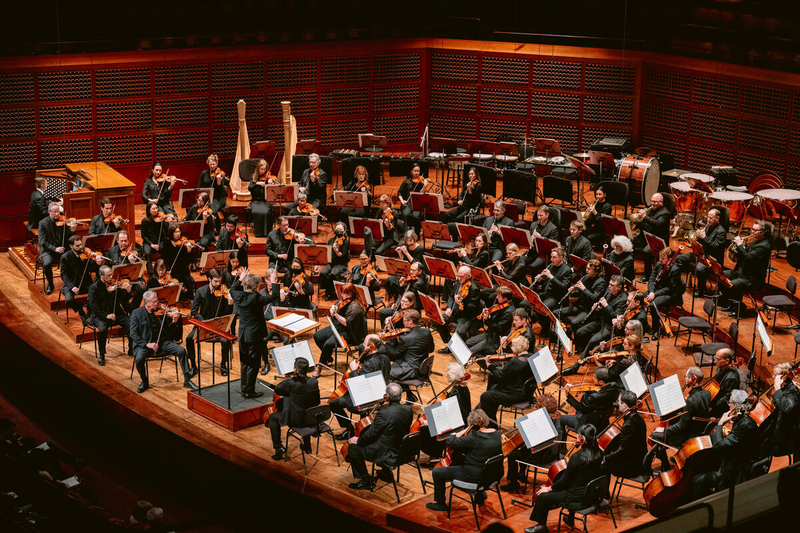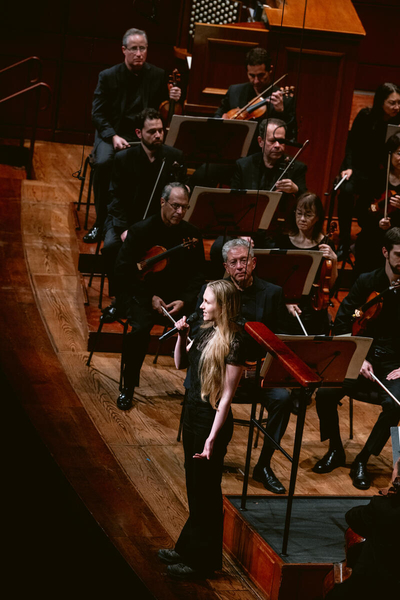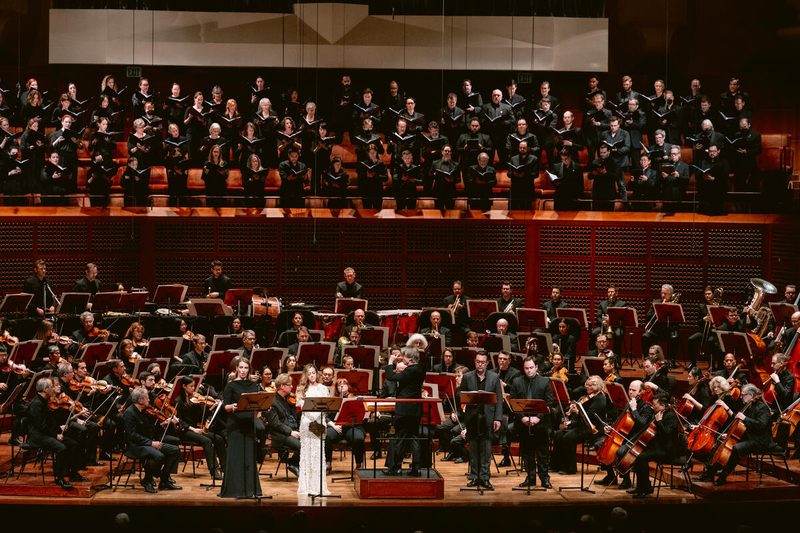
By Jack Marquez and Lynnette Jackson
The SF Symphony’s California Festival: A Celebration of New Music, promised to fill its November calendar with exciting new sonic experiences. On November 18th, we attended The “To the Edge” performance which showcased composer Gabriella Smith’s Breathing Forests. The piece provided the undisputed highlight of the concert series’ November 18th performance and delivered on the festival’s goals of “showcasing the most compelling and forward-looking voices in performances of works written in the past five years.”
Though Breathing Forests left the most lasting impression, it was only one part of the night’s three-part performance. Conductor Esa-Pekka Salonen began the evening with Igor Stravinsky’s Octet for Wind Instruments, composed in 1921. According to Stravinsky, inspiration for the piece’s unique composition of eight musicians playing only woodwinds and brass came to him in a dream. The resulting sound was indeed dreamlike, with airy, wandering melodies which—by design or pleasant coincidence, considering the theme of the evening’s main event—evoked the sounds of birds in a forest. The limited complement of musicians lended an intimate quality to the piece, inviting the audience to listen for the unique tones of individual instruments throughout the Octet’s three movements. This was a wonderful primer for the main performance of the evening.

Breathing Forests, composed in 2021 by Gabriella Smith, was truly show stopping. Powerfully conducted by Salonen and featuring the mighty sound of organist James McVinnie, Smith’s composition brought the full force of the symphony to bear across three movements. The first, Grow, delighted the audience as plucks and squeaks from the string section created the uncanny illusion of songbirds chirping around the stage, while other musicians tapped their instruments with the patter of falling rain. Breathe slowed things down, letting McVinnie’s organ seamlessly meld with the rest of the orchestra, both in harmony and in flashes of dissonance, which built to a roar in Burn. The volume and confidence with which the final movement blasted the audience with dissonant sound evoked the best of experimental film scoring; at times more special effect soundscape than symphony. The conclusion of the piece elicited a standing ovation full of whoops and cheers–-the most enthusiastic audience reaction we’ve experienced for any performance yet at Davies Symphony Hall.
The message behind the music resonated as well; Smith is an environmentalist as well as a composer. The nature-focused themes of her compositions are meant to call attention to the threats of man-made climate change and to inspire listeners to get involved in conservation efforts. As she pointed out in an interview with the symphony’s Steve Holt, “Music in particular… bring[s] people together as a community, which is so much more powerful than any kind of individual action.”

The symphony elected to bookend the evening with Stravinsky, concluding with an operatic performance of Les Noces. Although the Russian originally composed the piece for four pianos, four percussionists, four soloists, and a choir, the symphony instead performed a full orchestral arrangement by the late Steven Stucky. Like the original, Stucky’s version featured a choir and four vocalists: Lauren Snouffer (soprano), Kayleigh Decker (mezzo-soprano), Paul Appleby (tenor), and David Soar (bass). Each soloist played a character in the narrative of Les Noces, a fictional description of a traditional Russian peasant wedding ceremony.

In a unique and amusing twist, an original animation accompanied the piece, created by designer and animator Hilary Leben. While the operatic performance of Stravinsky’s composition had an almost religious, reverential quality, Leben’s animation was hilariously irreverent—an inspired contrast. Using a video recording of a ballet performance of Les Noces as a base, Leben created a ballet of her own. Instead of ballerinas on a stage, millipedes, spiders, and other household pets leapt and dove in mesmerizing synchronicity into sinks, out of toilets, and through sewer pipes, all rendered in a scribbly picture-book style. The animation also included an English translation of the lyrics, the stuffy, archaic, and repetitive quality of which only added to the delightful absurdity of the performance as a whole. While the unusual creative direction of this particular piece might not have been for everyone, we felt that Leben’s visual interpretation made the story more palatable. A bride and her family lamenting the loss of her innocence might be a tired theme to a modern audience, but it’s at least made more interesting when the bride is a cartoon millipede dancing under a faucet.

While a zany animation accompanying a classical piece provided a fun opportunity to make the old new again, it was the truly new composition of Breathing Forests that blew us away. On a night both opened and closed with pieces from one of the 20th century’s great composers, it was a 31-year-old environmentalist who stole the spotlight. We hope to hear more from Smith in the future, and we wish her success in her mission to inspire reflection and action on the impacts of climate change through music. Likewise, we hope to see the San Francisco Symphony continue to spotlight up-and-coming composers, introducing its audience to new sounds and new ideas.

As a final note, this evening was one of the last performances before the well-earned retirement of Principal Horn Robert Ward, a talented musician who has dazzled symphony-goers since 1980. In a touching tribute by Salonen, the conductor jokingly tried to calculate the countless hours of music Ward must’ve performed over his 43 years in the symphony. While the patrons of Davies Symphony Hall will miss his contributions in the years to come, rising stars like Gabriella Smith should provide audiences with plenty to look forward to in the countless hours of music ahead.



Be the first to comment